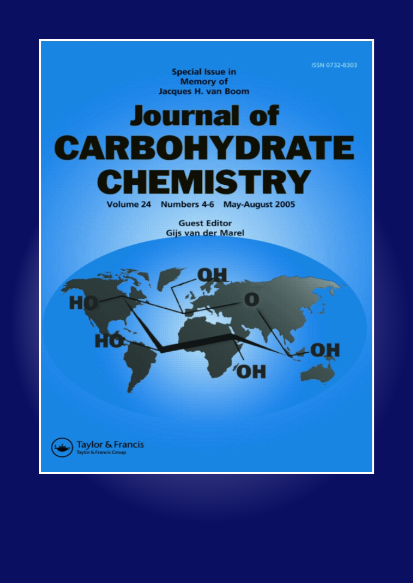绿海藻Ulva lactuca:超声辅助提取、结构及细胞毒活性的优化
IF 2.2
4区 化学
Q4 BIOCHEMISTRY & MOLECULAR BIOLOGY
引用次数: 0
摘要
采用超声辅助提取的方法,从绿海藻中提取一种紫檀素。采用响应面法对提取条件进行优化。最佳提取条件为提取温度84.75℃,提取时间30.51 min,料液比60.51 mL/g,得率为22.5%。该化合物由三个双糖组成:→4)-β- d -葡萄糖醛酸(1→4)α- l -鼠李糖-3-硫酸盐(1→,→4)α- l -伊杜醛酸(1→4)α- d -木糖-2-硫酸盐(1→4)α- l -鼠李糖-3-硫酸盐(1→,→4)α- d -木糖-2-硫酸盐(1→4)α- l -鼠李糖-3-硫酸盐(→)。对人肝癌、人乳腺癌、人宫颈癌、人结直肠腺癌和人未分化甲状腺癌等5种人类癌细胞系均有细胞毒活性。本文章由计算机程序翻译,如有差异,请以英文原文为准。
Ulvan from green seaweed Ulva lactuca: Optimization of ultrasound-assisted extraction, structure, and cytotoxic activity
An ulvan was extracted from green seaweed Ulva lactuca by ultrasound-assisted extraction. The extraction conditions were optimized by response surface methodology. The optimal conditions were extraction temperature at 84.75 °C, extraction time of 30.51 min, solvent to material ratio of 60.51 mL/g to achieve the yield of 22.5%. The ulvan is composed of repeated sequences of three disaccharides: →4)-β-D-Glucuronic acid(1→4)α-L-Rhamnose-3-sulfate(1→, →4)α-L-Iduronic acid(1→4)α-L-Rhamnose-3-sulfate(1→, and →4)α-D-Xylose-2-sulfate(1→4)α-L-Rhamnose-3-sulfate(→. The ulvan showed cytotoxic activities against five human cancer cell lines, including human hepatocellular carcinoma, human breast cancer, human cervical cancer, human colorectal adenocarcinoma and human undifferentiated thyroid carcinomas.
求助全文
通过发布文献求助,成功后即可免费获取论文全文。
去求助
来源期刊

Journal of Carbohydrate Chemistry
化学-生化与分子生物学
CiteScore
2.10
自引率
0.00%
发文量
20
审稿时长
1 months
期刊介绍:
The Journal of Carbohydrate Chemistry serves as an international forum for research advances involving the chemistry and biology of carbohydrates. The following aspects are considered to fall within the scope of this journal:
-novel synthetic methods involving carbohydrates, oligosaccharides, and glycoconjugates-
the use of chemical methods to address aspects of glycobiology-
spectroscopic and crystallographic structure studies of carbohydrates-
computational and molecular modeling studies-
physicochemical studies involving carbohydrates and the chemistry and biochemistry of carbohydrate polymers.
 求助内容:
求助内容: 应助结果提醒方式:
应助结果提醒方式:


